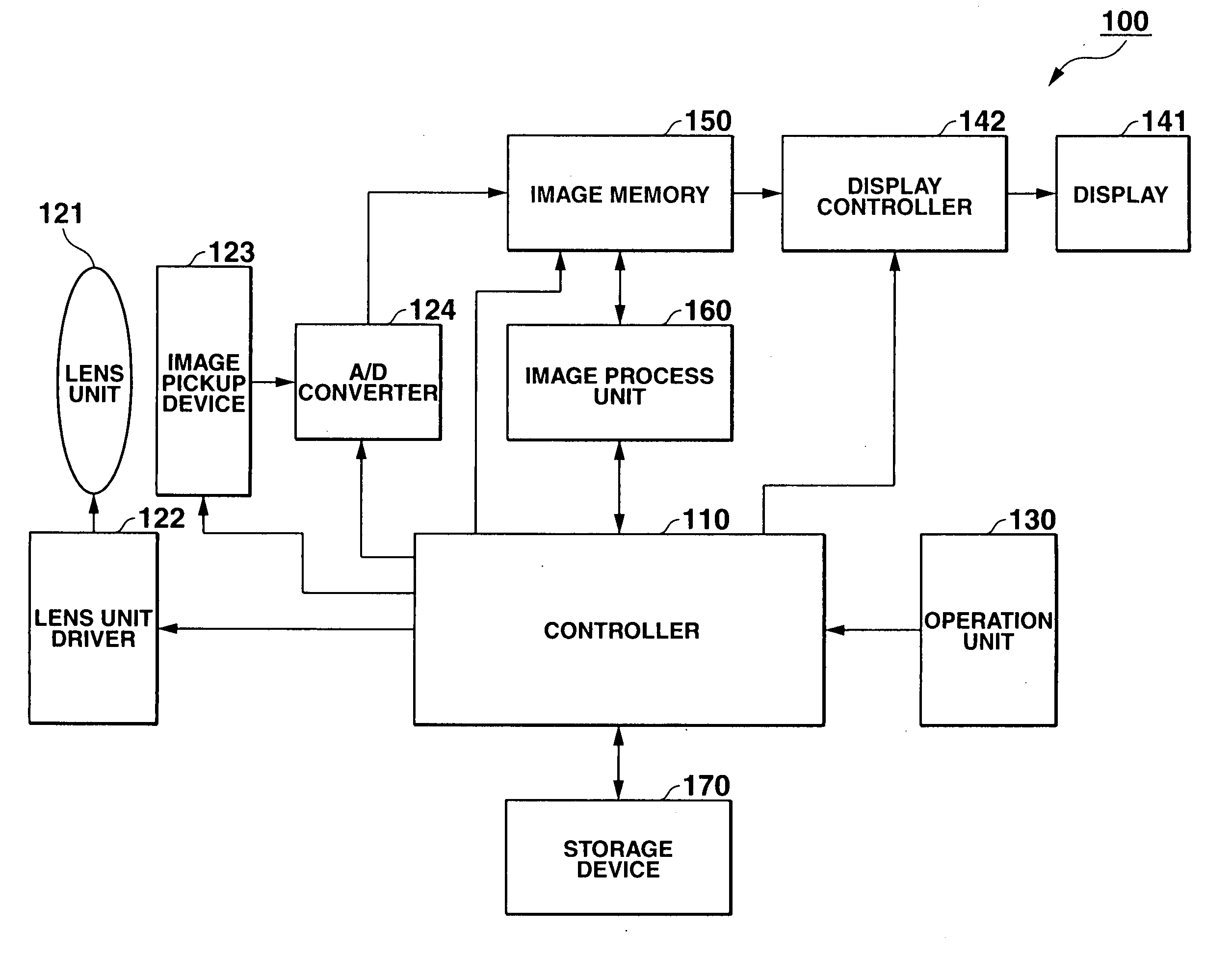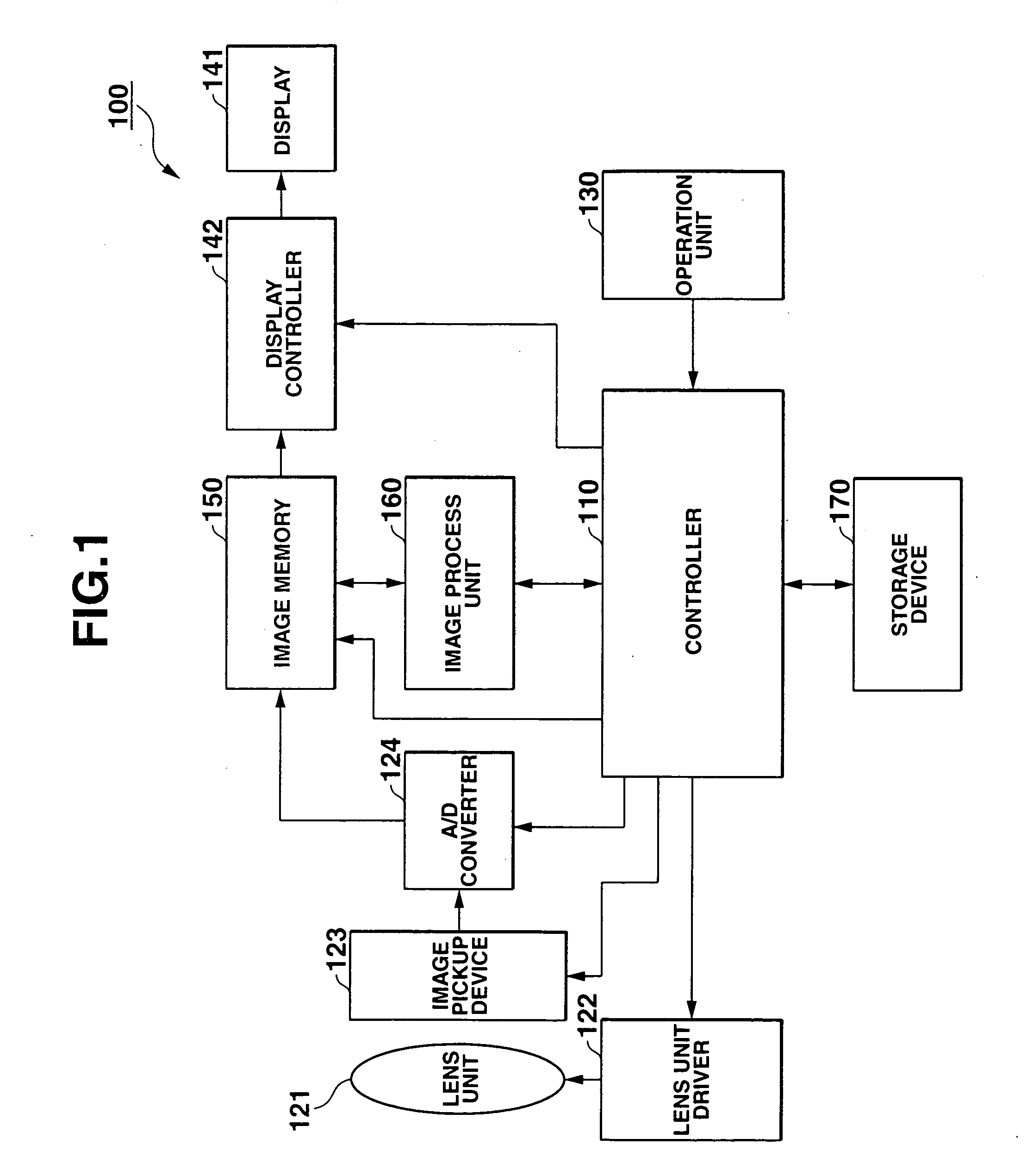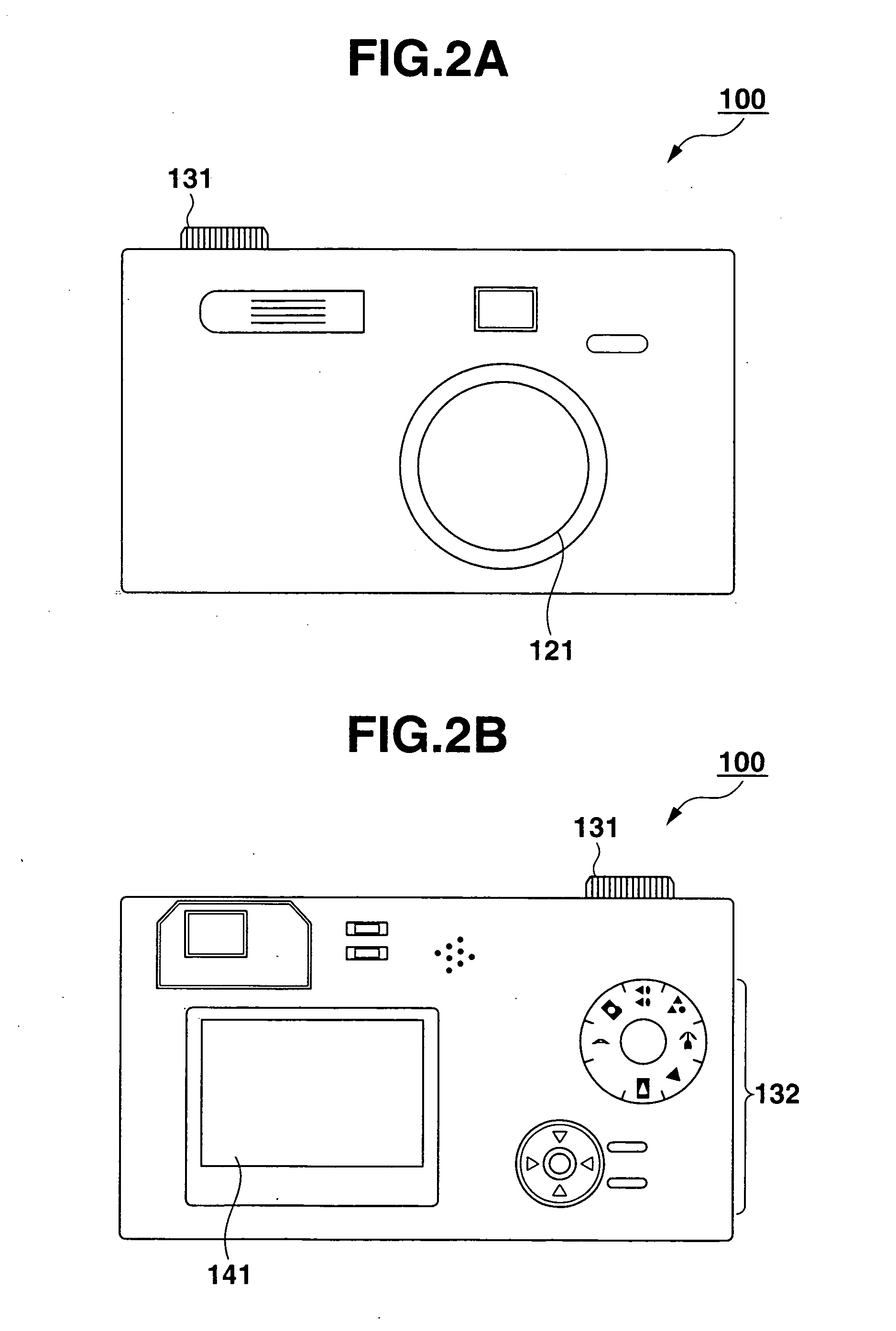Digital cameras and image pickup methods
a digital camera and image technology, applied in the field of digital cameras, can solve the problems of inability to obtain the image whose background is shaded off, the method cannot be successfully performed, and the method is not suitable for intentional focusing, so as to achieve a good focused image and facilitate the acquisition
- Summary
- Abstract
- Description
- Claims
- Application Information
AI Technical Summary
Benefits of technology
Problems solved by technology
Method used
Image
Examples
embodiment 1
[0029] In this embodiment, in response to a single image pickup command, a plurality of picked-up images are picked up successively while the camera focal distance is being changed. Focused parts of the respective images are displayed specifically such that the user can select and store images having desired focused parts from among the displayed images.
[0030] The structure of a digital camera according to the embodiment 1 will be described with reference to FIGS. 1 and 2. As shown, the digital camera 100 comprises a controller 110, a lens unit 121, a lens unit driver 122, an image pickup element 123, an A / D converter 124, an operation unit 130, a display 141, a display controller 142, an image memory 150, an image processor 160, and a memory 170.
[0031] Controller 110 comprises a CPU that controls the respective elements of camera 100.
[0032] Lens unit 121 comprises optical elements such as lenses and condenses that focus incident light from a subject on image pickup unit 123 for ...
embodiment 2
[0083] Embodiment 2 is obtained by replacing the image evaluation step S200 of the FIG. 3 process of embodiment 1 with a second image evaluation step S400 of FIG. 6. The second embodiment 2 is characterized in that focusing evaluation values of the ones at each same position of pluralities of blocks into which the plurality of images stored in memory 170 are respectively divided are compared, and respective different blocks of highest evaluation values are recognizably displayed.
[0084] The image evaluation step S400 to be performed by image processor 160 of FIG. 1 in the second embodiment 2 will be described in the flowchart of FIG. 6.
[0085] As in the processing in step S202 of FIG. 4 performed in embodiment 1, image processor 160 divides all the respective picked-up images P1-P6 stored in image memory 150 into 3×4 (=12) blocks B1-B12 (see FIG. 8) (step S401) Then, image processor 160 substitutes “1” as an initial value into variable B (representing a block number) (step S402), an...
embodiment 3
[0093] As described above, in the embodiments 1 and 2 the user selects desired ones from the displayed images each with a result of evaluation added thereto in the image evaluation process that was performed in the image pickup process, and then stores only the selected images on the memory card. On the other hand, in embodiment 3, after the image evaluation process an image storing process which stores only the images whose evaluation results are good automatically on the memory card is performed, and then a stored-image arranging process in which the user deletes his or her selected images from the memory card in accordance with the results of evaluation displayed along with the stored images is performed.
[0094] The processing to be performed in the embodiment 3 is obtained by replacing the image evaluation / display and storing processes in steps S300 of FIGS. 3 and 5 and S106 of FIG. 3 with an image storing process of FIG. 13 and a stored-image arranging process of FIG. 14. The i...
PUM
 Login to View More
Login to View More Abstract
Description
Claims
Application Information
 Login to View More
Login to View More - R&D
- Intellectual Property
- Life Sciences
- Materials
- Tech Scout
- Unparalleled Data Quality
- Higher Quality Content
- 60% Fewer Hallucinations
Browse by: Latest US Patents, China's latest patents, Technical Efficacy Thesaurus, Application Domain, Technology Topic, Popular Technical Reports.
© 2025 PatSnap. All rights reserved.Legal|Privacy policy|Modern Slavery Act Transparency Statement|Sitemap|About US| Contact US: help@patsnap.com



